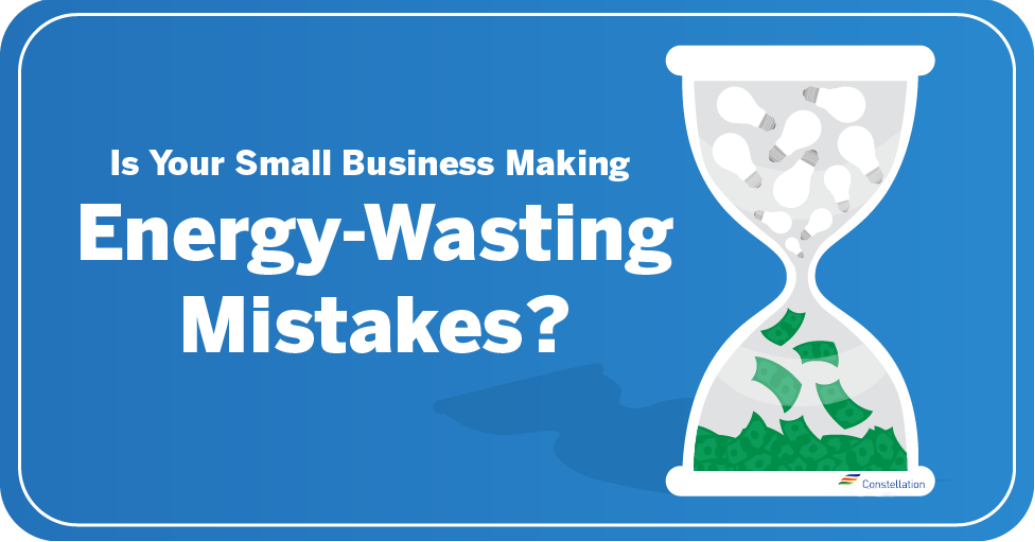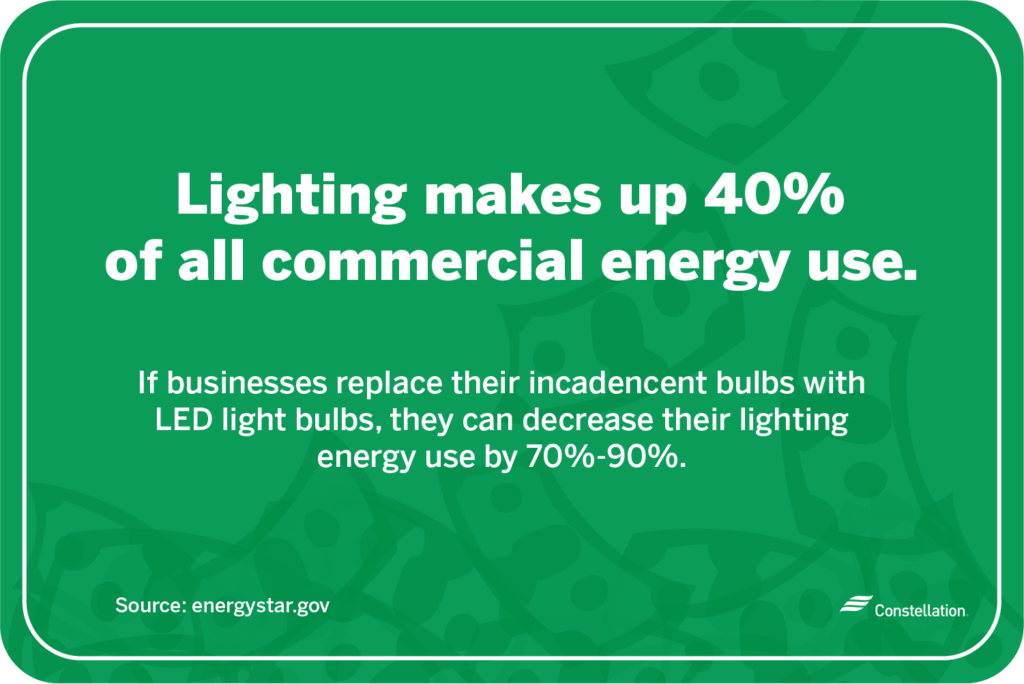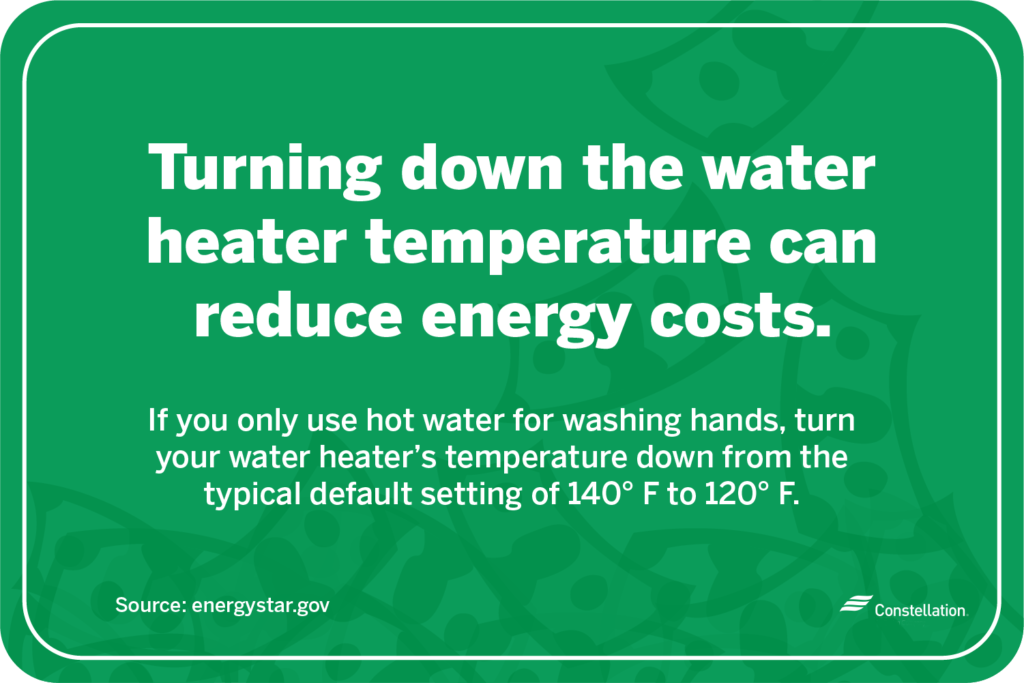
- Category:
Small Business Energy Savings -
Last updated:
November 26, 2024
Is Your Small Business Making These Common Energy Mistakes?
Small businesses use energy for a myriad of reasons. Lighting, security, manufacturing, heating and cooling, and electronic equipment all consume large amounts of energy. With energy playing such a large role in business life, even the most environmentally conscious small business can develop energy-wasting habits that, if left unchecked, can increase the business’s carbon footprint.
According to ENERGY STAR®️, small businesses can cut 10 to 30 percent of their energy usage by addressing bad energy habits, and even better, they can do so without sacrificing service, quality or comfort.
The most common energy mistakes you’re (probably) making
Some mistakes are universal, no matter what type of small business you’re operating. Inefficient lighting, running equipment when it isn’t in use, neglecting HVAC maintenance and other mistakes are commonplace. Here are some of the most common energy-wasting mistakes and a few ideas about how to stop wasting energy in your small business.
1. You’re using inefficient lighting.
Lighting accounts for 20 to 30% of all energy use in the United States. If you’re using traditional incandescent lights, up to 90% of that energy is lost as heat, forcing the business’s cooling system to work harder.
LED light bulbs use 70 to 90% less energy than incandescent bulbs, and they last at least 15 times longer. While the cost of transitioning from traditional bulbs to LEDs can be high, a single LED bulb can save a business up to $55.00 in electricity compared to traditional bulbs.

2. You leave the lights on in empty rooms.
Leaving lights on in empty rooms is one of the most common energy-wasting habits. Unless lighting is needed for security reasons, there’s no need to light spaces that aren’t in use. Installing timers and motion sensors will help your business use lighting wisely and only when needed.
Industry in focus: wholesale
Warehouses and other large spaces require significant amounts of lighting for security and employee safety. There’s no need, however, to keep the lights on for the entire floor at all times. Install motion sensors so only the space in use is lit, and you’ll increase your energy savings.
3. You use equipment that’s old and dysfunctional.
Replacing an old piece of equipment is expensive, but so is paying the price of inefficient energy use. Newer equipment—especially ENERGY STAR®️–approved equipment—will be more energy efficient than older models, so any money you’re saving by not upgrading is being lost to energy costs. In the long run, upgrading is the more practical and cost-efficient choice.
Industry in focus: food and dining
Restaurants use 2.5 times more energy per square foot than any other type of commercial building, in part due to the need for large refrigeration units. While it may be tempting to avoid the costs of new refrigeration equipment, ENERGY STAR®️–approved equipment reduces energy costs, especially when it is regularly maintained.
4. You’re using desktops instead of laptops.
Desktop computers consume an average of 194 kWh (kilowatt hours) per year per unit. In comparison, the average laptop consumes 75 kWh per year. Switching from desktops to laptops makes sense when replacing old computer equipment. Laptops also have other benefits: they take up less desk space, are easily portable and are cheaper to replace than desktop computers.
Industry in focus: personal services
If you’re in the personal services industry, you rely heavily on technology for customer communication, and you may use desktops for tasks requiring additional processing. If your business relies on desktops, you can reduce energy costs by using ENERGY STAR®️ models, LED monitors and power-saving modes that power down PCs when not in use.
5. You keep charging your devices even after they reach 100 percent.
Leaving a devices like tablets and smart phones charging once their batteries have reached 100 percent is one of the most common energy-wasting habits, perhaps because it’s convenient to leave the device plugged in. Once at 100 percent power, mobile phones, tablets and laptops are wasting energy. Unplug the device, and work off the battery until you need to recharge.
6. You’re not programming your programmable thermostat.
Owning a programmable thermostat but not using it is a bad energy habit, as you could be controlling exactly when your heating and cooling system kicks in. The best smart thermostats save energy by regulating your interior climate, reducing HVAC use in empty spaces and altering temperatures to reflect your work schedule and building occupancy.
7. You don’t maintain your HVAC, or you wait for a problem before you schedule maintenance.
Up to half the energy used by a building goes toward heating or cooling the interior climate, and forgetting to maintain your HVAC can lead to inefficiencies and expensive repairs. Regular HVAC maintenance keeps your heating and cooling system as energy efficient as possible.
Industry in focus: manufacturing
HVAC systems are vital for controlling temperature in manufacturing floors, where equipment and staff can overheat without adequate temperature control. Routinely checking air ducts for debris and checking ductwork for air leaks will produce the best temperature results with the least energy waste.
8. You leave fans on in empty rooms.
Ceiling fans can be used with air conditioners to circulate air throughout a business. Fans, however, rely on air movement to cool people—not rooms. Leaving fans running in employee rooms is a common energy-wasting mistake: unless someone is in the room, the fan has no effect on air cooling.
9. Your business wastes too much hot water.
Every time a hot water tap turns on, your water heater fires up. Hot water may seem necessary for proper hygiene, but the CDC reports warm water is just fine for washing hands.
To save water, encourage employees to wet their hands, turn off the faucet, lather with soap and then turn the faucet back on to rinse. You can also install automatic sinks that dispense water for set periods of time.

Pro tip! Turn down your water heater to reduce energy costs! The factory default setting for most water heaters is 140 degrees Fahrenheit. The Department of Energy recommends turning the temperature down to 120 degrees if hot water is only being used to wash hands.
10. You don’t have an energy plan for employees.
One of the most pervasive energy-wasting mistakes is the assumption that small business owners have to reduce their business’s energy consumption all by themselves. But this isn’t true: Saving energy is a responsibility employees should share. Develop a plan that outlines how employees can save energy at work, and use incentives to encourage employees to save energy.
Industry in focus: property management
Small business owners who rent to tenants have even less control of their energy usage than businesses with employees, as they are at the mercy of energy-wasting mistakes made by tenants. Using energy-monitoring tools, small business owners can reward tenants who employ smart energy-saving practices with incentives to continue reducing energy use.
Need more energy-saving tips for your industry?
Now that you know how to stop wasting energy, you can turn around your business’s bad energy habits. Even small changes can positively affect your utility bill. For more information on how to prevent energy waste, check out Constellation’s Small Business Resource Center.




